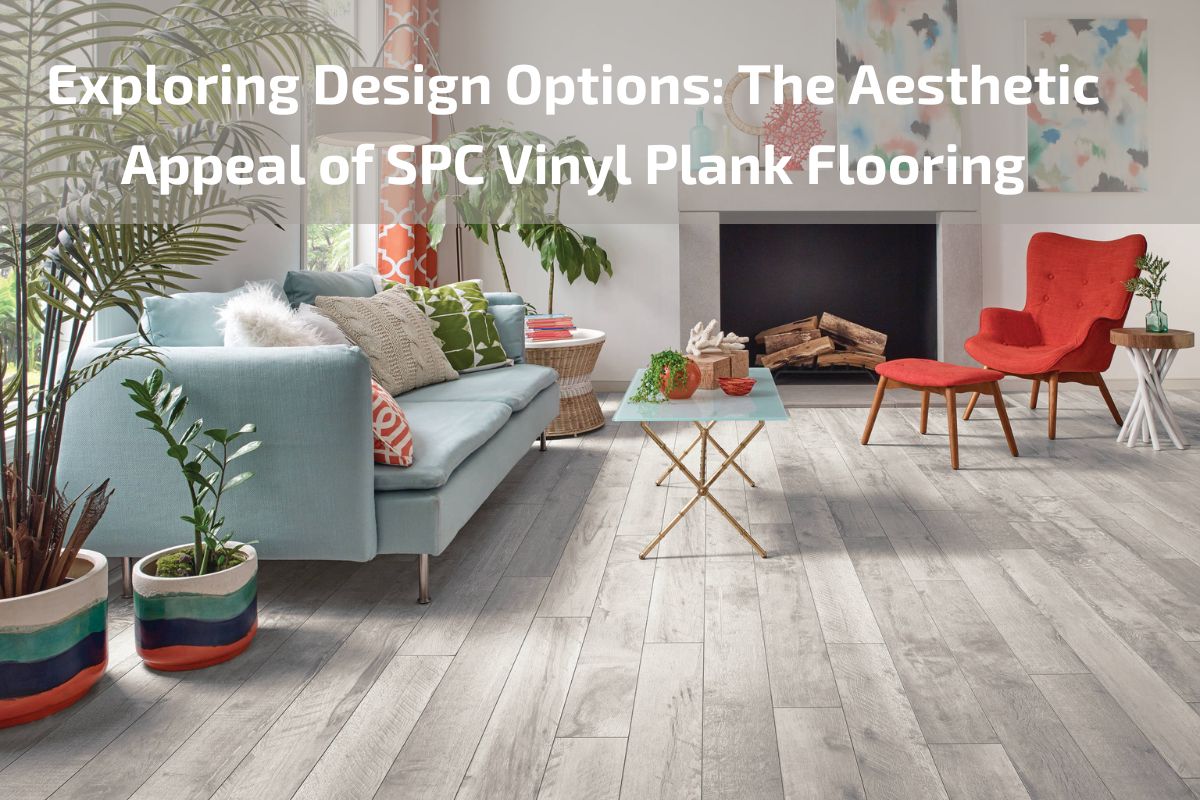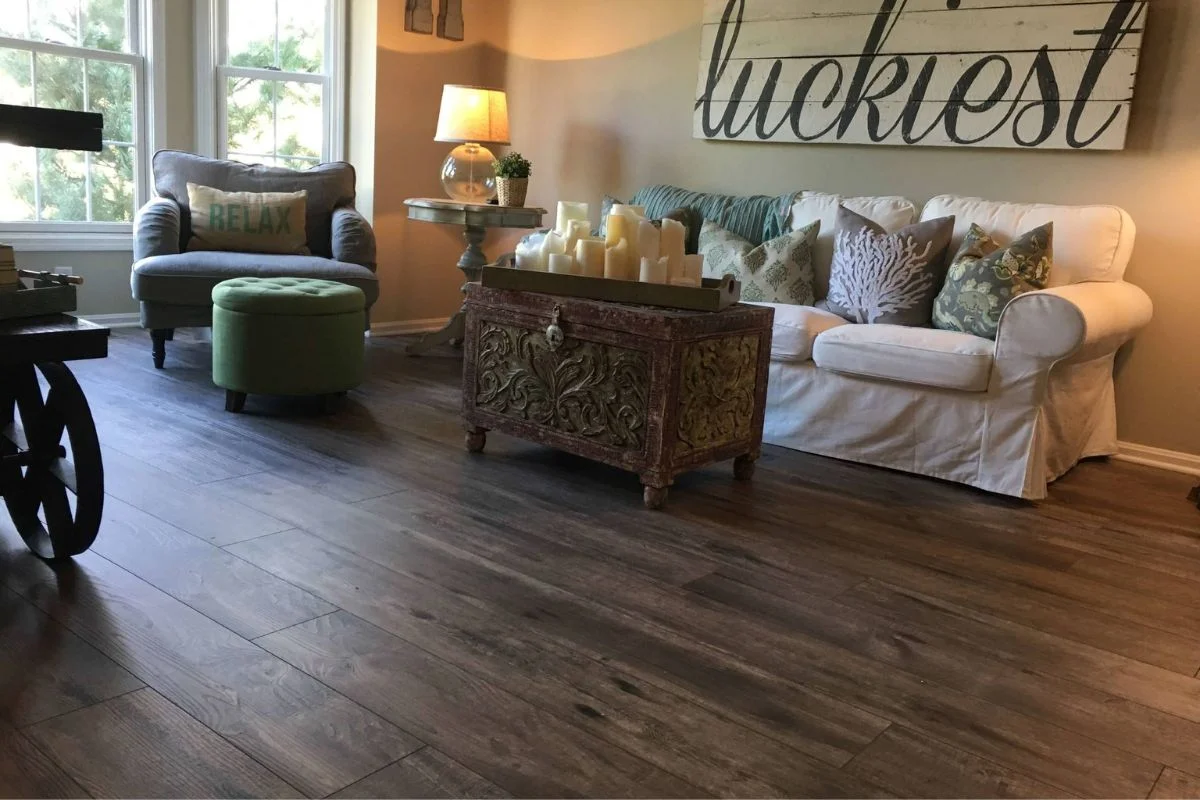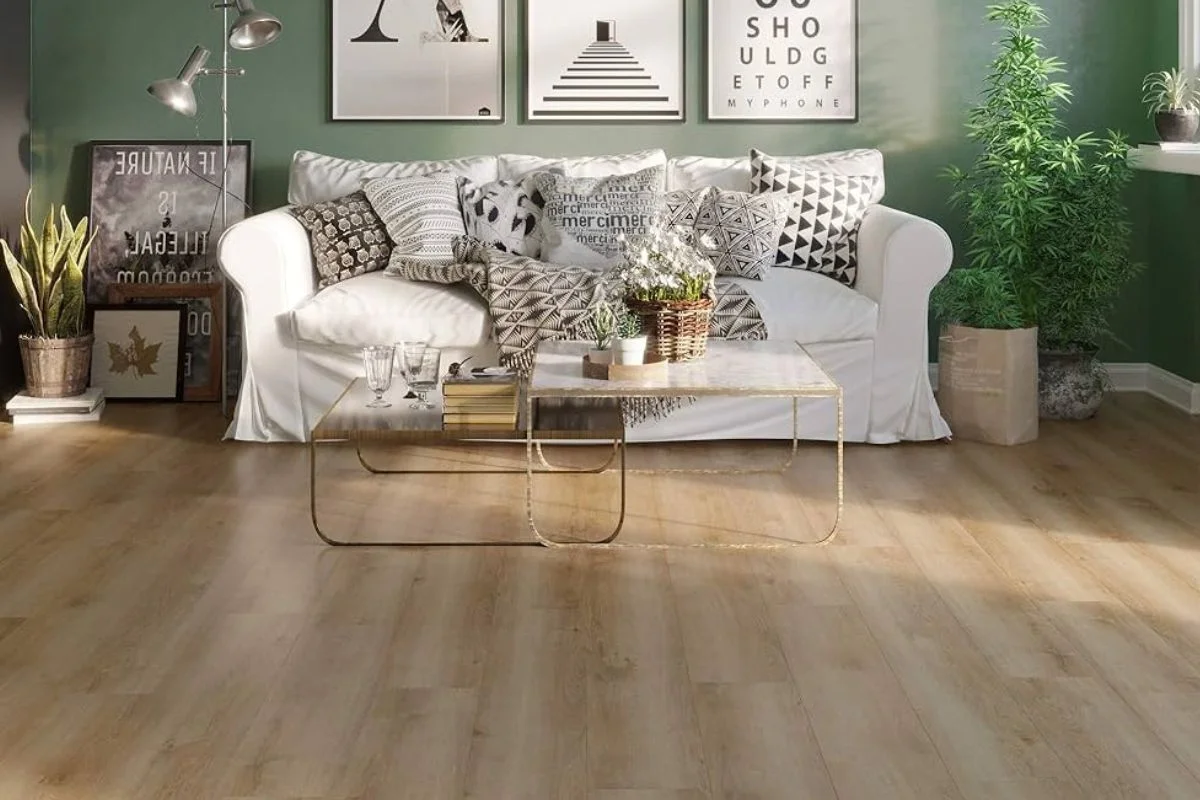Exploring Design Options: The Aesthetic Appeal of SPC Vinyl Plank Flooring
When it comes to flooring options, homeowners and designers alike are constantly seeking the perfect blend of style, durability, and practicality. In recent years, Stone Plastic Composite (SPC) Vinyl Plank Flooring has emerged as a frontrunner in the realm of interior design, offering a remarkable combination of aesthetic appeal and functional benefits.
SPC Vinyl Plank Flooring has revolutionized the flooring industry with its ability to mimic the look and feel of natural materials like hardwood, stone, and tile, while delivering superior performance in terms of durability and water resistance. From rustic wood grains to sleek marble finishes, the design options available with SPC Vinyl Plank Flooring are virtually limitless, allowing homeowners to achieve their desired aesthetic vision with ease.
What is SPC Vinyl Plank Flooring?
SPC Vinyl Plank Flooring stands for Stone Plastic Composite Vinyl Plank Flooring. It’s a type of flooring material that has gained popularity for its durability, water resistance, and ease of installation. Here’s a breakdown of its components and characteristics:
Stone Plastic Composite (SPC): SPC consists of a blend of natural limestone powder, polyvinyl chloride (PVC), and stabilizers. This composite creates a dense, rigid core that makes the flooring extremely durable and resistant to impacts.
Vinyl Layer: Above the SPC core, there’s a printed vinyl layer. This layer is responsible for the flooring’s visual appearance, mimicking the look of wood, stone, or other materials. Advanced printing techniques allow for a wide range of designs and patterns.
Wear Layer: A transparent wear layer is applied on top of the vinyl layer to protect the floor from scratches, stains, and fading due to sunlight exposure. The thickness of this wear layer varies, with thicker wear layers providing better protection and longevity.
Click Lock Installation System: SPC vinyl plank flooring typically comes with a click-lock system, which allows for easy installation without the need for adhesives. Planks can be locked together securely, creating a floating floor that can be installed over various types of subfloors.
Waterproof: One of the key advantages of SPC flooring is its waterproof nature. The combination of materials, particularly the stone composite core, makes it highly resistant to water damage. This makes it suitable for use in areas prone to moisture, such as kitchens, bathrooms, and basements.
Durability: SPC vinyl plank flooring is known for its durability and resistance to wear and tear. It can withstand heavy foot traffic, making it suitable for both residential and commercial spaces. Additionally, its rigid core helps prevent indentations from heavy furniture or objects.
Low Maintenance: Maintaining SPC vinyl plank flooring is relatively easy. Regular sweeping or vacuuming, along with occasional mopping using a mild detergent, is usually sufficient to keep it clean and looking new.
Definition and Composition SPC Vinyl Plank Flooring
SPC Vinyl Plank Flooring, short for Stone Plastic Composite Vinyl Plank Flooring, is a type of resilient flooring material designed for both residential and commercial use. It’s composed of several layers that contribute to its overall structure and performance:
Stone Plastic Composite (SPC) Core: The core layer is made primarily of a mixture of natural limestone powder, polyvinyl chloride (PVC) resin, and stabilizers. This combination creates a rigid and dense core that provides stability, durability, and resistance to impacts and indentation.
Vinyl Layer: Above the SPC core is a printed vinyl layer. This layer is responsible for the flooring’s visual appearance, which can mimic the look of hardwood, stone, ceramic tile, or other materials. Advanced printing techniques allow for realistic textures and patterns.
Wear Layer: A transparent wear layer is applied on top of the printed vinyl layer. This wear layer serves as a protective shield, guarding the flooring against scratches, stains, fading, and wear from daily use. The thickness of the wear layer varies, with thicker layers offering enhanced protection and longevity.
UV Coating (optional): Some SPC vinyl plank flooring may feature an additional UV coating on top of the wear layer. This coating helps to further protect the flooring from discoloration and damage caused by exposure to sunlight and UV radiation.
Attached Underlayment (optional): Certain SPC vinyl plank flooring products may come with an attached underlayment layer beneath the core. This underlayment provides added cushioning, sound insulation, and thermal insulation properties, enhancing comfort underfoot and reducing noise transmission.
Importance of Vinyl Plank Flooring Choices in Interior Design
Aesthetic Appeal: Vinyl plank flooring comes in a wide range of colors, patterns, and textures, allowing for versatile design options. Whether aiming for a rustic, modern, or traditional look, the choice of vinyl plank flooring can significantly impact the overall aesthetic of a space.
Mimicking Natural Materials: Vinyl plank flooring can convincingly mimic the appearance of natural materials such as hardwood, stone, or tile. This enables homeowners or designers to achieve the desired look without the expense or maintenance requirements associated with genuine materials.
Consistency and Cohesion: Vinyl plank flooring provides consistency and cohesion throughout a space, particularly in open-concept floor plans. Choosing the right flooring that complements the design theme or color scheme of the room helps tie the entire interior together.
Versatility in Design: Vinyl plank flooring can be installed in various patterns, such as herringbone or diagonal layouts, adding visual interest to a room. Additionally, mixing and matching different plank sizes or incorporating border details can create unique design features.
Durability and Functionality: The durability and resilience of vinyl plank flooring make it suitable for high-traffic areas such as kitchens, bathrooms, and entryways. Selecting a durable vinyl plank with a thick wear layer ensures longevity and minimizes the need for frequent replacement or maintenance.
Comfort and Underfoot Feel: Some vinyl plank flooring options come with attached underlayment layers, providing added cushioning and comfort underfoot. This is particularly beneficial in spaces where occupants spend a lot of time standing or walking.
Ease of Maintenance: Vinyl plank flooring is relatively easy to clean and maintain compared to other flooring materials. Choosing a low-maintenance option can simplify upkeep and preserve the flooring’s appearance over time.
Budget-Friendly Options: Vinyl plank flooring is often more affordable than natural materials such as hardwood or stone. This makes it an attractive choice for budget-conscious homeowners or commercial property owners looking to achieve a high-end look without breaking the bank.
Advantages and Disadvantages of SPC Vinyl Plank Flooring
Advantages:
Durability: SPC vinyl plank flooring is highly durable due to its rigid stone plastic composite core. It can withstand heavy foot traffic, making it suitable for both residential and commercial use.
Water Resistance: The composition of SPC flooring makes it waterproof, which means it can be installed in areas prone to moisture such as bathrooms, kitchens, and basements without the risk of damage from spills or humidity.
Stability: The rigid core of SPC flooring provides stability and resistance to expansion and contraction caused by temperature fluctuations or changes in humidity levels.
Easy Installation: SPC vinyl plank flooring often comes with a click-lock installation system, allowing for easy and quick installation without the need for adhesives. This makes it a suitable option for DIY projects.
Wide Range of Designs: SPC flooring comes in a variety of designs, colors, and textures, allowing homeowners and designers to achieve the desired aesthetic for their space. It can mimic the look of natural materials such as wood or stone at a lower cost.
Low Maintenance: SPC vinyl plank flooring is easy to clean and maintain. Regular sweeping or vacuuming, along with occasional mopping, is usually sufficient to keep it looking new.
Disadvantages:
Hardness: While the rigidity of SPC flooring contributes to its durability, it can also make it feel harder underfoot compared to other types of flooring such as engineered hardwood or laminate. Using area rugs or mats can help alleviate this issue.
Limited Repair Options: Unlike hardwood flooring, which can be sanded and refinished to repair damage, SPC vinyl plank flooring does not offer the same repair options. In the case of severe damage, the affected plank may need to be replaced entirely.
Environmental Impact: SPC vinyl plank flooring is made from synthetic materials, including PVC, which raises concerns about its environmental impact. Some environmental advocates prefer alternative flooring options made from natural or sustainable materials.
Initial Cost: While SPC flooring is generally more affordable than natural materials like hardwood or stone, it may have a higher initial cost compared to other types of vinyl flooring such as luxury vinyl tile (LVT) or laminate.
Limited Thermal Insulation: SPC flooring does not provide significant thermal insulation properties, which means it may feel cold underfoot in colder climates. Using radiant heating systems or area rugs can help mitigate this issue.
Maintenance Tips to Keep Your SPC Vinyl Plank Flooring
Regular Cleaning: Sweep or vacuum the floor regularly to remove dust, dirt, and debris. This prevents scratching and keeps the surface looking clean.
Mop with Mild Detergent: Periodically mop the floor with a solution of mild detergent and water. Avoid using harsh chemicals or abrasive cleaners, as they can damage the surface of the flooring.
Avoid Excessive Water: While SPC vinyl plank flooring is waterproof, excessive moisture can still seep into the seams and cause damage over time. Wipe up spills promptly using a damp cloth to prevent water from pooling on the surface.
Use Furniture Pads: Place felt or rubber pads under furniture legs to prevent scratching and indentations on the flooring when moving or rearranging furniture.
Protect from Direct Sunlight: Prolonged exposure to direct sunlight can cause fading and discoloration of SPC vinyl plank flooring. Use blinds, curtains, or UV-blocking window film to protect the floor from sunlight.
Avoid Sharp Objects: Prevent scratches and gouges by avoiding dragging heavy or sharp objects across the floor. Use furniture sliders when moving heavy items to avoid damaging the surface.
Entrance Mats: Place entrance mats or rugs at doorways to trap dirt and moisture before it gets tracked onto the flooring. This helps prevent debris from scratching the surface and reduces the need for frequent cleaning.
Rotate Furniture: Occasionally rearrange furniture to distribute weight evenly across the floor and prevent indentations from forming in high-traffic areas.
Trim Pet Nails: Keep pet nails trimmed to prevent scratches on the flooring surface. Place rugs or mats in areas where pets frequently walk or lie down to further protect the floor.
Avoid Waxing or Polishing: SPC vinyl plank flooring does not require waxing or polishing. These products can leave a residue on the surface and make the floor slippery. Stick to regular cleaning and maintenance for best results.
Conclusion
In conclusion, SPC vinyl plank flooring offers a range of benefits that make it a popular choice for both residential and commercial spaces. Its durability, water resistance, ease of installation, and aesthetic versatility make it an attractive option for homeowners and designers alike.





0 comments